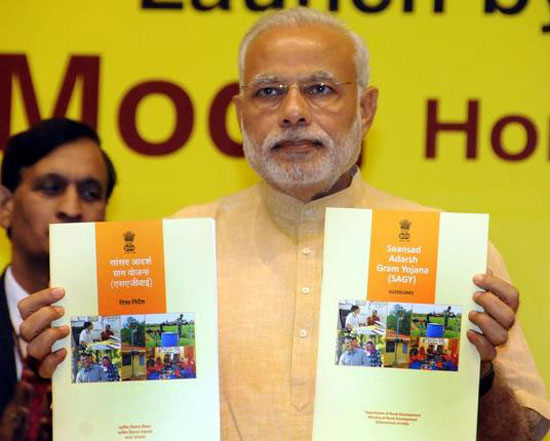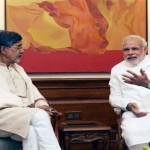The scheme encourages MPs from both Houses to identify and develop one village from their constituencies
Taking forward his announcement during his address to the nation on August 15, Prime Minister Narendra Modi on Saturday unveiled a blueprint for the Saansad Adarsh Gram Yojana (SAGY) on Jayaprakash Narayan’s birth anniversary.
The scheme encourages Members of Parliament from both Houses to identify and develop one village from their constituency as a model village by 2016, and two more by 2019, covering over 2,500 villages of the 6 lakh villages country-wide.
“This is not a rupiya-paisa yojana but a demand-driven, people’s participatory scheme. There are 800 parliamentarians and in three years, 2,500-odd villages could get covered. If States were to initiate their own similar schemes with MLAs, 6,000 to 7,000 villages could get covered. One good village can affect an entire area, and a viral effect could begin,” Mr. Modi said while unveiling SAGY for which no new funds have been allocated.
MPLAD funds to benefit model villages
The 65-page outline for the Sansad Adarsh Gram Yojana, released by Prime Minister Narendra Modi on Saturday here, in the presence of Rural Development Minister Nitin Gadkari, requires MPs to identify one village with a population of 3,000-5,000 in the plains and 1,000-3,000 in the hills within a month for convergence of existing schemes for socio-economic development of the area.
MPs can choose any village except their own or their spouse’s. There is no other criterion.
MPs are expected to facilitate a village development plan, motivate villagers to take up activities and use the Rs.5-crore MPLAD fund to fill gaps for funds besides mobilising “additional resources especially from Corporate Social Responsibility” in sewage and water supply schemes.
The activities and outcomes will cover broad development indicators such as health, nutrition and education through organising immunization drives, improving mid-day meal schemes, improving Aadhaar enrolment, setting up “smart schools” with IT-enabled classrooms and e-libraries, improving panchayat infrastructure under schemes such as MNREGA and Backward Regions Grants Fund.
A series of measures speak of better implementation of existing and new schemes and laws including RTI Act, National Food Security Act, National Rural Livelihood Mission, Pradhan Mantri Jan Dhan Yojana, while at the same time emphasising “activities to improve hygienic behaviour” by encouraging bathing among villagers, use of toilets and exercising for thirty minutes every day. It envisions social development in villages through identifying a village day, a village song, and focusing on alternative methods of dispute resolution.
There will be real-time web-based monitoring and a first review after five months by an independent agency. District Collectors will carry out a baseline surveys and then chair monthly review meetings to monitor progress. At the State-level, Chief Secretaries will lead an empowered committee on the same and the Minister for Rural Development and Secretary, Rural Development, will chair two national-level committees to track the scheme.
“This is not a small risk that I have taken by suggesting this. Instead of maximising the use of MPLAD funds over the largest possible area, this will instead require focusing the funds in a village. MPs will be able to identify the shortcomings in implementation of schemes,” said Mr. Modi.
Speaking at the event, Mr. Gadkari said: “SAGY aims at socio-economic transformation, not just making government funds and facilities available to villages. This will be a movement from swaraj to suraaj.” The aim would be to inculcate a sense of pride, volunteerism, and self-reliance in villages, he added.



